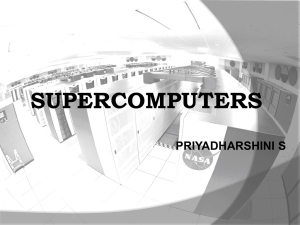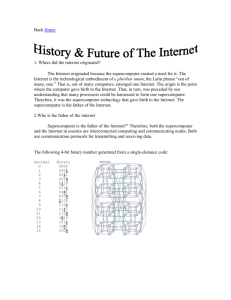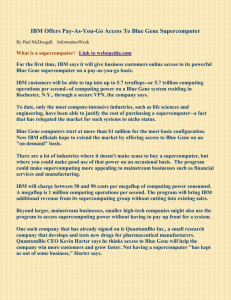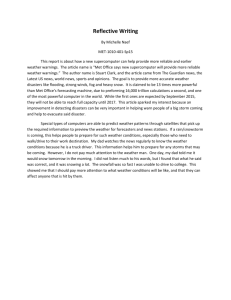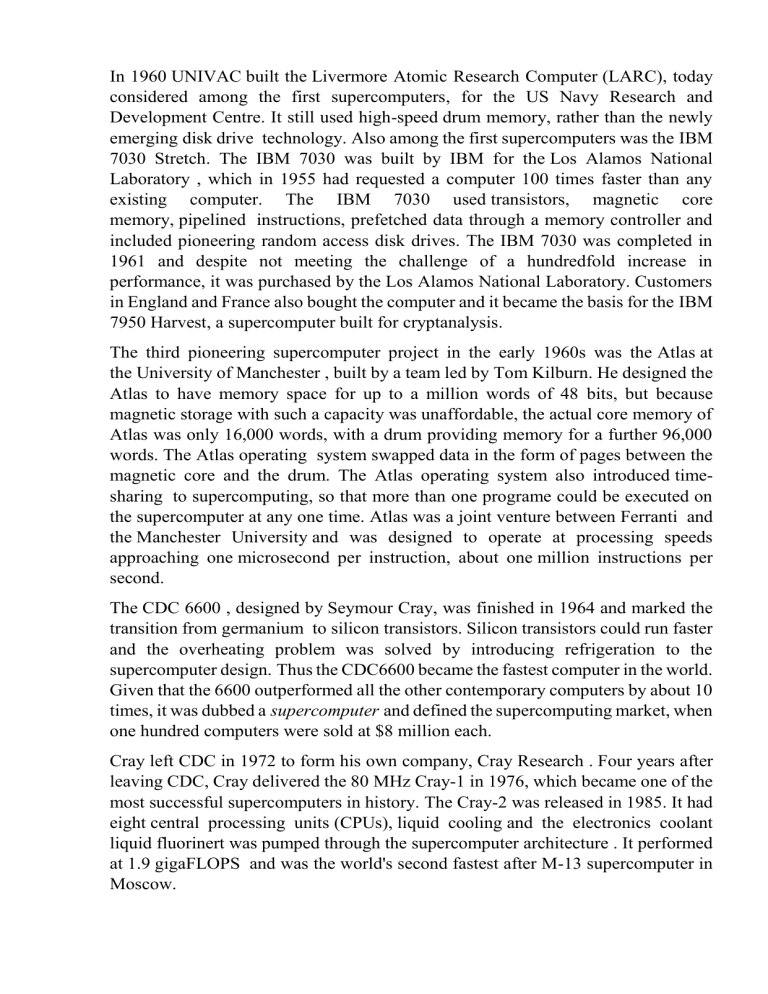
In 1960 UNIVAC built the Livermore Atomic Research Computer (LARC), today considered among the first supercomputers, for the US Navy Research and Development Centre. It still used high-speed drum memory, rather than the newly emerging disk drive technology. Also among the first supercomputers was the IBM 7030 Stretch. The IBM 7030 was built by IBM for the Los Alamos National Laboratory , which in 1955 had requested a computer 100 times faster than any existing computer. The IBM 7030 used transistors, magnetic core memory, pipelined instructions, prefetched data through a memory controller and included pioneering random access disk drives. The IBM 7030 was completed in 1961 and despite not meeting the challenge of a hundredfold increase in performance, it was purchased by the Los Alamos National Laboratory. Customers in England and France also bought the computer and it became the basis for the IBM 7950 Harvest, a supercomputer built for cryptanalysis. The third pioneering supercomputer project in the early 1960s was the Atlas at the University of Manchester , built by a team led by Tom Kilburn. He designed the Atlas to have memory space for up to a million words of 48 bits, but because magnetic storage with such a capacity was unaffordable, the actual core memory of Atlas was only 16,000 words, with a drum providing memory for a further 96,000 words. The Atlas operating system swapped data in the form of pages between the magnetic core and the drum. The Atlas operating system also introduced timesharing to supercomputing, so that more than one programe could be executed on the supercomputer at any one time. Atlas was a joint venture between Ferranti and the Manchester University and was designed to operate at processing speeds approaching one microsecond per instruction, about one million instructions per second. The CDC 6600 , designed by Seymour Cray, was finished in 1964 and marked the transition from germanium to silicon transistors. Silicon transistors could run faster and the overheating problem was solved by introducing refrigeration to the supercomputer design. Thus the CDC6600 became the fastest computer in the world. Given that the 6600 outperformed all the other contemporary computers by about 10 times, it was dubbed a supercomputer and defined the supercomputing market, when one hundred computers were sold at $8 million each. Cray left CDC in 1972 to form his own company, Cray Research . Four years after leaving CDC, Cray delivered the 80 MHz Cray-1 in 1976, which became one of the most successful supercomputers in history. The Cray-2 was released in 1985. It had eight central processing units (CPUs), liquid cooling and the electronics coolant liquid fluorinert was pumped through the supercomputer architecture . It performed at 1.9 gigaFLOPS and was the world's second fastest after M-13 supercomputer in Moscow.
